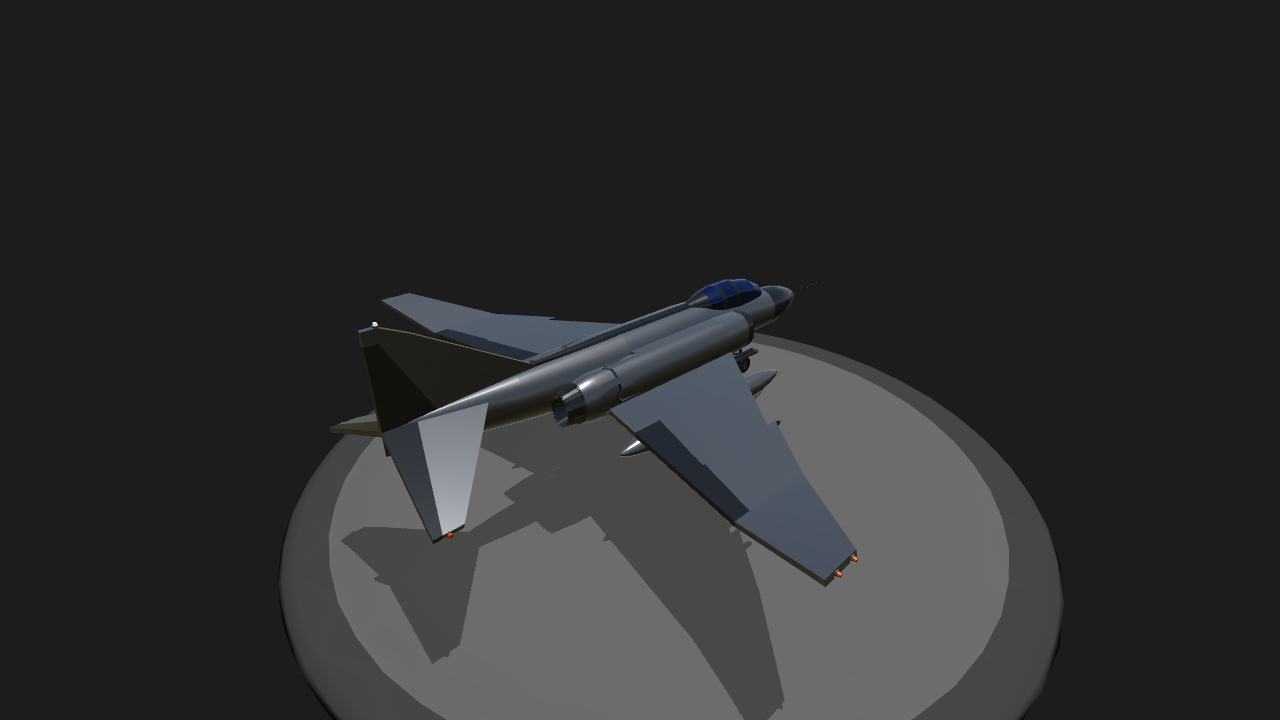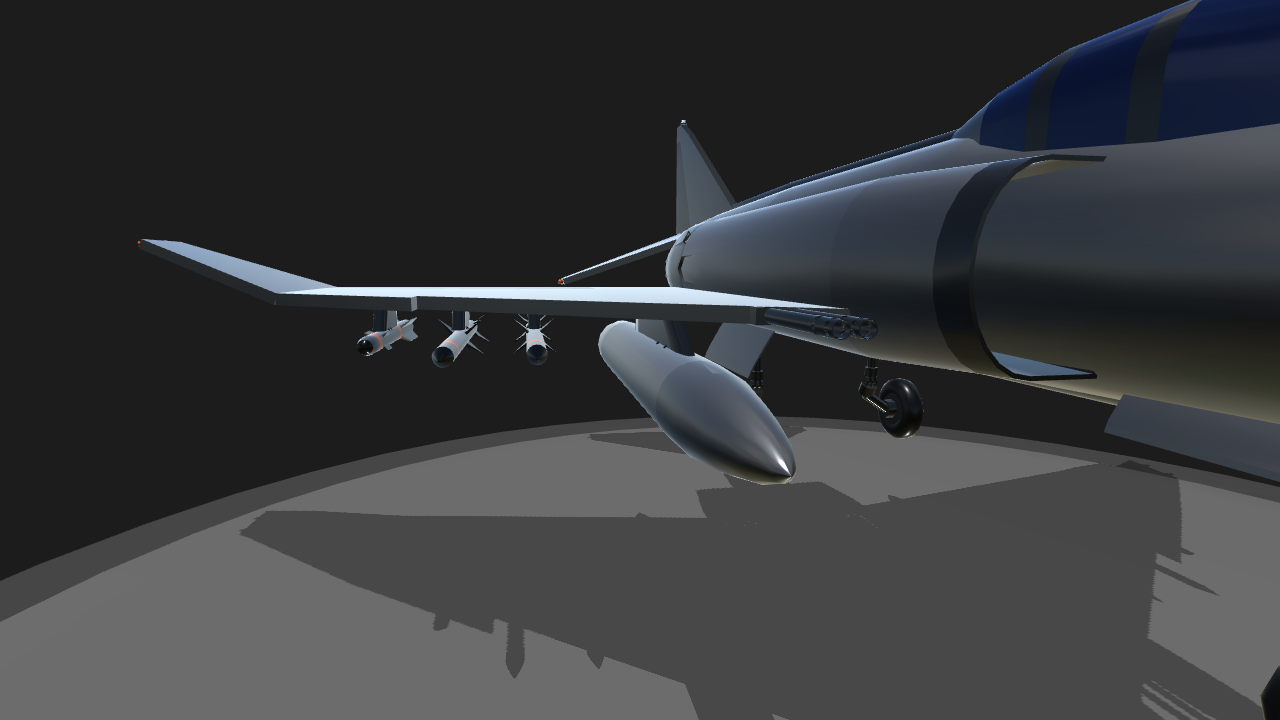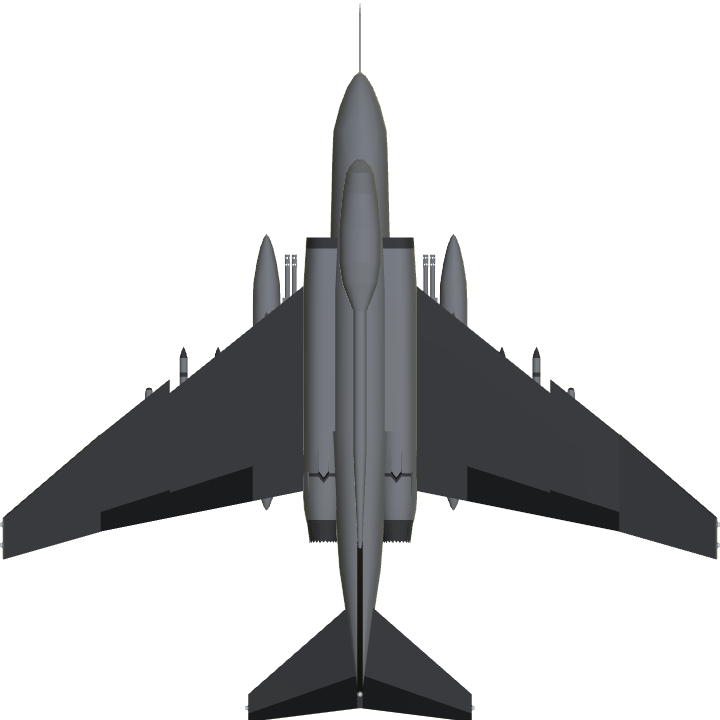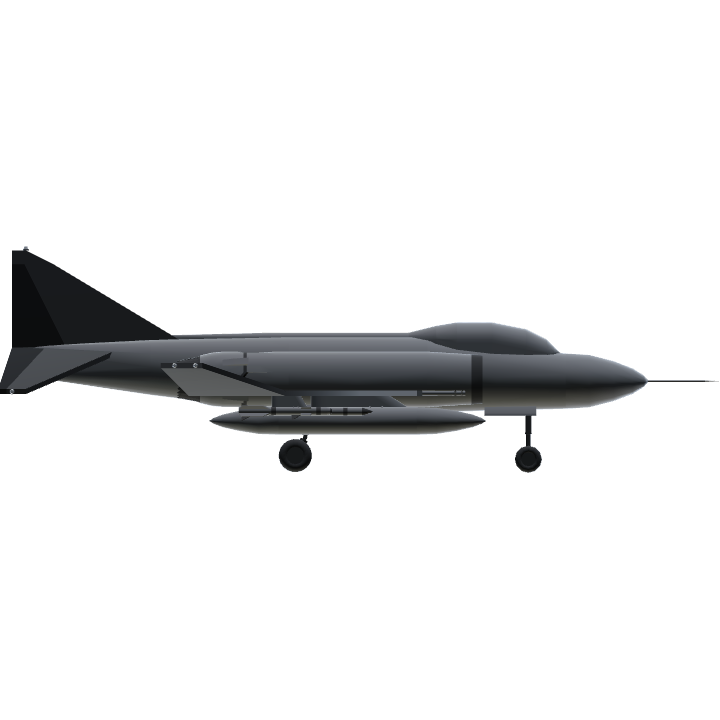Action group 1 for dropping tanks , airbrakes and steering of wheels exist. The McDonnell Douglas F-4 Phantom II[N 1] is a tandem two-seat, twin-engine, all-weather, long-range supersonic jet interceptor aircraft/fighter-bomber originally developed for the United States Navy by McDonnell Aircraft.[1] It first entered service in 1960 with the U.S. Navy. Proving highly adaptable, it was also adopted by the U.S. Marine Corps and the U.S. Air Force, and by the mid-1960s had become a major part of their respective air wings.[2] The Phantom is a large fighter with a top speed of over Mach 2.2. It can carry more than 18,000 pounds (8,400 kg) of weapons on nine external hardpoints, including air-to-air missiles, air-to-ground missiles, and various bombs. The F-4, like other interceptors of its time, was designed without an internal cannon. Later models incorporated an M61 Vulcan rotary cannon. Beginning in 1959, it set 15 world records for in-flight performance,[3] including an absolute speed record, and an absolute altitude record.[4]
Specifications
General Characteristics
- Created On Windows
- Wingspan 42.7ft (13.0m)
- Length 42.6ft (13.0m)
- Height 13.4ft (4.1m)
- Empty Weight 12,132lbs (5,503kg)
- Loaded Weight 20,722lbs (9,399kg)
Performance
- Power/Weight Ratio 3.253
- Wing Loading 57.8lbs/ft2 (282.0kg/m2)
- Wing Area 358.7ft2 (33.3m2)
- Drag Points 3800
Parts
- Number of Parts 77
- Control Surfaces 7
- Performance Cost 502







Danks
@Treadmill103